Freight shipping is always complicated, even when it’s easy. As 2021 progresses and 2022 looms, capacity remains tight and costs are creeping up. It is essential for shippers to regularly take a look at their freight-moving methods to reduce freight costs and keep operations efficient.
There are many ways you can ensure you’re getting the best value for your freight shipping dollar. Taking steps to reduce freight costs can keep your bottom line in the black. Some ways to reduce freight costs, like scheduling off-hours pickup, can be implemented with your next load. Others, like building strategic relationships, can take time.
Regardless, putting forth efforts to reduce freight costs can keep your business trucking and allow you to save money over the long haul. Check out the 15 easy ways to reduce freight costs below and help ensure you’re getting the best shipping rates possible. You’ll find it simple to reduce shipping costs and keep your supply chain strong with these methods.
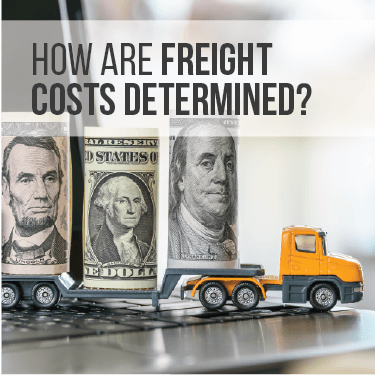
Before we dive into ways to reduce transportation and freight costs, it is important to understand how freight costs are determined.
In the most simple terms, truckload freight rates are determined by the distance you’re shipping the goods and the current price of fuel. Distance is often a per-mile fee; fuel costs and surcharges can vary. Most carriers set their own fuel surcharge rate tables.
Freight costs for LTL shipments can be a little more complicated. LTL freight costs are usually based on weight, density (or freight class), freight classification, distance, accessorial charges, base rates, and minimums.
The factors above aren’t the only considerations going into your freight quote. Seriously reduced truckload capacity is driving up the cost of shipping goods as 2021 rolls into 2022.
What is truck capacity? Truck capacity refers to the number of loads that need to be shipped compared to available trucks and carriers. Truck capacity is tighter than ever as the U.S. economy swings back after the COVID-19 pandemic.
In fact, numbers from DAT Trendlines show that van-to-load capacity is up 57.8% in June 2021 over June 2020. This means there simply aren’t enough trucks on the load boards available to move freight. As a result, freight costs are rising.
Need to know more about capacity? Our post about truckload capacity should give you an in-depth understanding of the current crunch.

As noted above, tight capacity is driving up freight costs. Another factor sending freight costs through the roof? Fuel surcharges.
Fuel surcharges are also on the rise as the costs of gas and oil increase. In fact, the cost Let’s look at the numbers from the U.S. Energy Information Administration and AAA:
These numbers mean that the cost of diesel fuel is 25% higher this year than at the same time last year. Higher gas prices are increasing fuel charges and shippers are feeling it in their wallets.
Regardless of costs, businesses still need to ship freight to keep the wheels of commerce turning and supply chains strong. Are they other ways you can reduce freight costs? Absolutely. We’ve put together a list of 15 days to reduce freight costs.

You can take steps to reduce freight costs even during times of tight capacity and rising fuel charges. Here are 15 easy ways to reduce freight costs to help keep your business’s transportation management processes and cost-efficient as possible.
Some of our tips below will provide a quick fix; others are more long-term solutions. Consider following all 15 easy ways to reduce freight costs for maximum savings or pick and choose the methods that best apply to your business.
Many shippers move the same products along the same lanes every single day. Or once a week. Or even once a month. If you’re moving volume across a steady lane, you can use this to your advantage when negotiating reduced freight costs.
Carriers and brokers love working with consistent shippers. They can arrange backhauls so their driver isn’t deadheading home and they can build out a network along your lane. This extra efficiency adds up to cost savings for you.
Additionally, today’s tight capacity means that relationship building is extra important. Moving a steady volume of goods with the same broker or carrier means that you’ll be reliable and dependable, which likely means the carrier/broker will be reliable and dependable too.
You might reduce freight costs by up to 5% by shipping steady volume across a lane with a regular partner.
Collaborating with your carrier or broker to move freight on off-peak days can add up to serious savings. You might move freight earlier in the week or late in the day to make sure you’re not fighting other shippers for capacity and paying a premium for an available truck.
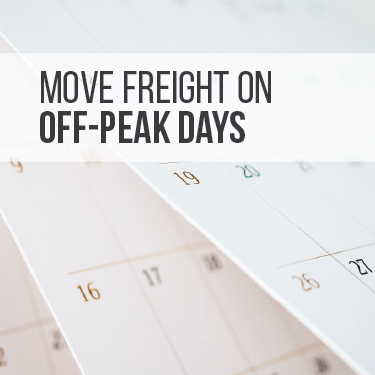
If you can avoid it, you also should consider avoiding moving freight during the peak shipping season. Historically, the late summer and early fall months of August-October are prime-time for carriers. This means capacity is even tighter and the chances of finding an available truck for your shipment is even lower.
Peak shipping season is extra pricey. In addition to paying for tight capacity, your carrier or broker might also charge you a peak season surcharge.
You might reduce freight costs by up to 10% by shipping on off-peak days and out of busy season.
It just makes sense. Sending out fewer shipments is an easy way to save on freight. Small and mid-sized shippers can opt into retail consolidation programs.
What is retail consolidation? Retail consolidation lets smaller-volume shippers combine loads on the same lane. Shippers can see serious cost savings by moving a full truckload together when compared to the costs of individual LTL shipments.
Retail consolidation creates a collaborative shipping model, often organized by a 3PL (third-party logistics) provider. You might ship your goods to the same big box or retail stores as other companies in your area and it just makes sense to ship together. Consolidating shipments reduces labor for the carrier and receiver, which can be passed on to shippers as serious cost savings.
You might reduce freight costs by up to 25% when consolidating loads over individual LTL shipments.
Don’t be tempted to hop from carrier to carrier to find the best freight rates. Working with one strategic freight partner over the long haul can pay off in dividends when it comes to the master plan.
You’ll likely find that shippers who choose to build strategic relationships with brokers and carriers are also choosing to adopt transportation management system advantages. These advantages often come with bottom-line implications.
For example, longer-term contracts or regular business down a particular lane gives your broker or carrier a chance to build a network in that area. Mining for customers along your lane can help the broker or carrier operate efficiently without logging deadhead miles. What do more efficient carrier operations mean for you? Reduced freight costs.
Longer-term contracts with a single broker or carrier can also help reduce freight costs. A 3-year contract will lock in current rates -- which will likely be quite valuable as the capacity squeeze continues.
You’ll also get better service through building strategic relationships, as your freight partner will be more willing to go the extra mile through mutually beneficial arrangements.
You might reduce freight costs by 5%, if not more, by building a strategic freight partnership with your carrier or broker.
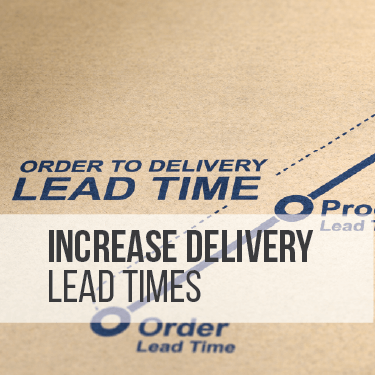
Sometimes when you need to move freight, you need to move it now. Sometimes you can plan ahead and be a little more flexible. If you have time, plan your shipment right with ample delivery lead time.
How does increasing delivery lead times help to reduce freight costs? When you give a broker or carrier ample time, they have the time needed to line up the right assets and equipment and can plan on avoiding dead time waiting at a facility, to load up, or even to unload.
In fact, one of the biggest expenses for carriers and shippers is paying for idle time. Proper planning and increased delivery lead times allow carriers to avoid wasted time and keep operations at peak efficiency. Not only will you get better service, but you might find reduced freight costs when you increase delivery lead times.
You might reduce freight costs by 5-15% by increasing delivery lead times and giving your carrier ample time to prepare.
Getting freight on the truck quickly and efficiently is essential to preventing idle time for your carrier. Earning a reputation for loading up quickly can lead to discounts in the long run by saving both time and money.
Some brokers and carriers might give favorable rates to those with a track record of speedy load times. It can also help cut down on accessorial and surprise charges, so you might find opportunities to save there, as well.
Additionally, some carriers and brokers factor load time into their freight rate quotes. You might expect to spend about $25 an hour on time spent loading up the truck.
You might reduce freight costs by $25 by cutting a single hour off your load time.
High freight costs are just one common problem facing today's shippers. A strategic partner can help you overcome. Check out our list of 10 Logistics Challenges and How to Solve Them.
Every shipment needs to be protected from bumps on the road. Packaging your shipment on the right pallets or in the right crates can help reduce the dunnage needed to protect your freight while in transit.
Dunnage refers to the loose packing materials used to prevent jostling between pallets or crates. It is commonly used in the cargo hold during ocean shipping but also has a place in a dry van or even a reefer unit. Dunnage might include blocking, bracing, airbags, dividers, and other materials.
Using less dunnage can reduce freight costs as it requires less material and effort on the carrier’s part. Reducing dunnage might be particularly useful when shipping LTL freight, as less packing material will reduce your shipment’s size and volume.
You might reduce freight costs by 1-3% by reducing dunnage.
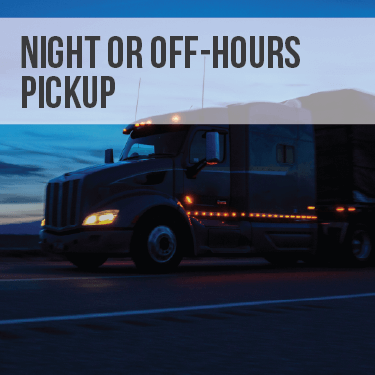
Carriers work at all hours of the day and you can use this to your advantage. Off-hours or night pickups and deliveries can help trucks and drivers take advantage of hours they’d be idling.
Scheduling night or off-hours pickup might let your carrier run your shipment as a backhaul. While many shippers might limit deliveries to 8 a.m. to 3 p.m., booking a delivery after hours creates flexibility. You might find hidden capacity by scheduling deliveries and pickups that won’t conflict with other runs.
Off-hours and night deliveries reduce freight costs by allowing brokers and carriers to truly maximize their assets. This comes in handy for you as it can seriously cut costs.
You might reduce freight costs by up to 30% by taking advantage of the night or off-hours pickups and deliveries.
Carriers hate running empty trucks. It wastes driver time and cuts down on already-crunched capacity. Backhauling lets your carrier run your load on a return trip, saving shippers and trucks time and money.
Instead of deadheading back home, many carriers and brokers will accept reduced-cost shipments to make money on a run they would make anyway. You might be able to move freight for the cost of fuel, the driver’s fee, and a small premium. It can end up being much cheaper than a regular load.
Work with brokers and carriers based in your region to easily find backhauling opportunities. Even load boards can help you find the right carrier at the right price.
You might reduce freight costs by 15-20% by finding the right backhauling opportunities and leveraging the right circumstances.
Your freight quote includes more than the cost of simply transporting freight. You’ll find all kinds of charges and fees outlined on your freight quote and on your final bill.
Taking the time to truly look at past invoices and understand all charges and fees can help you find opportunities to cut back and save. Are you being overcharged for dunnage fees, like mentioned above? Other possible fees and charges might include:
Are you regularly being charged any of the above fees? There are solutions. Consider sitting down with your carrier or broker and seek out advice about reducing and eliminating these additional costs. You’re likely seeing these charges because your shipment requires service above and beyond the originally quoted arrangement. Your carrier will likely appreciate your good faith effort.
You might reduce freight costs by up to 25% by understanding and working with your carrier or broker to reduce extra charges and fees.

Last-minute freight shipments can be bad news for carriers and brokers, especially during times of tightened capacity. There simply might not be a truck available when you wait until the last moment to ship. And if there is a truck available, you’re likely going to pay a steep premium.
Give your freight broker or carrier as much lead time as possible when scheduling your shipment. This will help then make sure the right equipment is available to get the job done and help ensure you get a fair freight rate.
Additionally, you’ll likely find that providing your carrier or broker with a shipment forecast can help cut expenses, too. This will allow them to better organize and plan assets and resources, and let them provide you with even better service.
You might reduce freight costs by 5-15% by providing your carrier with a shipment forecast and plenty of lead time and avoiding last-minute shipments.
Are you still keeping track of inventory, shipments, and other supply chain essentials with an Excel spreadsheet? If so, you might be able to let technology work for you and reduce freight costs in the process.
Software like transportation management systems, warehouse management systems, and even yard management systems often come with great ROI in reducing supply chain costs. You can let this technology go to work for you by using it to create shipping manifests, invoices, required compliance documents, and much more.
Not only will relying on technology let you reduce your labor costs, but can also help ensure your broker or carrier has the information needed for an efficient shipment. This can go a long with in fostering strategic relationships and even ensuring your carrier or broker is paid on time.
You might reduce freight costs by 5% by letting technology handle the hard parts of the shipping and supply chain processes.
Medium and large businesses sometimes have an advantage when it comes to shipping rates. Standing capacity might help them reduce freight costs. What is standing capacity? Cstanding capacity is basically fixed-rate shipping. The shipper or business regularly purchases the same amount of trucks or space, often with lower rates and better service.
Shipping fixed-rate freight along regular lanes can ensure capacity is reserved for you when you need it. Fixed-rate shipping lets you lock in a price. This means that you’ll pay the same rate even as capacity continues to drop.
You might reduce freight costs by 5% or more with fixed-rate shipping and standing capacity.
You might find that fixed-rate shipping and standing capacity is best reserved for the big dogs in the business world. However, small businesses can take steps to reduce freight rates, too. How can small businesses reduce shipping costs? We’ve got some answers in our recent post.

There’s more to packaging goods than just palletizing and crating. While reducing the use of dunnage can help keep freight costs low, the proper packaging can also help.
What does this mean? Packaging goods properly means being as efficient as possible -- especially if you’re shipping LTL. Many carriers and brokers use dimensional weight price scale. Your freight rate is likely determined not just by weight, but also by volume.
It might make sense to review your current packaging guidelines. This will help you avoid wasted space. Collapse any cargo as needed. Keep your freight as stackable as possible. While you’re at it, make sure you’re using a few pallets as possible to ship your goods. There are several standard pallet sizes and choosing the right pallet for your freight can help you pack efficiently, too. Minimizing the number of pallet spaces needed is an easy way to reduce LTL freight costs.
You might reduce freight costs up to $175 for every pallet space you save by packing goods properly.
Even though capacity is right, there are still many carriers on the road today. It might be hard to find the right carrier to meet your needs. But when you find the right freight partner, it’s likely that you’ll see reduced freight costs.
USA Truckload Shipping, powered by R+L Global Logistics, is eagerly seeking strategic shippers. Our vast carrier network means we’ll have almost instant access to the assets you need, when you need them. A beneficial alliance with a partner like USA Truckload Shipping can lead to reduce freight costs now and in the future, helping you keep more of your hard-earned revenue in your pocket.
No matter whether you are a small business with a one-off freight need or a major shipper on many lanes, R+L Global Logistics is eager to do the legwork for you. Lock in rates with a contract or build a strategic relationship with an leading ally in the freight business.
All the fixes above can help you improve your business’s transportation strategy and seriously impact your bottom line. Reduce freight costs and always get great service by implementing these methods.
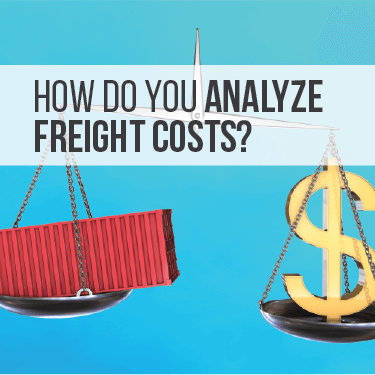
We’ve shared a lot of information about easy ways to reduce freight costs. But how do you know if you’re really saving money? You analyze freight costs. A freight spend analysis is a deep dive into your company’s shipping and logistics activities.
How do you analyze freight costs? Take a close look at the quotes and invoices you’ve received for recent shipments. Look at the total cost, as well as details like route, carrier, modes of transport, and freight class. Look at additional fees and accessorial charges. This should give you a detailed view of your company’s freight spend.
You’ll be able to answer a few important questions when you analyze freight costs the right way. Not only will you gain knowledge on your company’s freight spend, but you’ll also get information that will help you keep your supply chain strong. Questions to think about during freight spend analysis include:
Getting the answers to these questions will help you keep your freight budget and spend aligned with your goals. A proper analysis will let you arm yourself with information that empowers you to make the best decisions for your business. Look backward at your past activity and spend to make it simple to plan a strong future.
A strategic partner, like USA Truckload Shipping powered by R+L Global Logistics, is ready to go to work for you. By forming a strategic partnership, we’ll show you indepth data on where your money is going when you book freight shipments with us. We’ll handle the shipments and details so you can focus on growing your businessess.
There are many ways to reduce freight costs, even when capacity is crunched. From maintaining a steady shipment volume with a strategic partner to looking for backhaul opportunities, you’ll find all kinds of freight solutions to keep your books in the black.
Many of the best ways to reduce freight costs hinge on developing a strategic partnership with a strong logistics ally. Consider putting USA Truckload Shipping, powered by R+L Global Logistics, behind the wheel of your freight and shipping needs.
As a 3PL provider of freight, warehousing, fulfillment, import/export, and other logistics services, we’re ready to meet the needs you’ll find on each link of your supply chain.
Freight services offered by USA Truckload Shipping include:
These robust and diverse services make it easy to align your business with the best. See how we can help you reduce freight costs by reaching out today. No matter whether you need a hassle-free quote for a single shipment or have serious volume to move down a dedicated lane, we’re ready to scale a solution for you.
Call today at 866-353-7178 or request a freight rate quote online now.
R+L Global Logistics
315 NE 14th St., Ocala, FL 34470